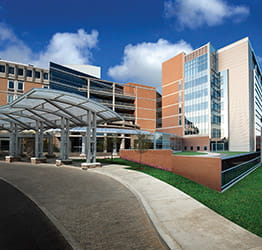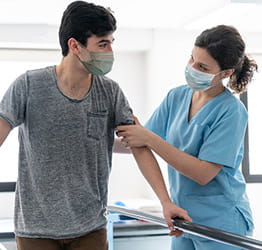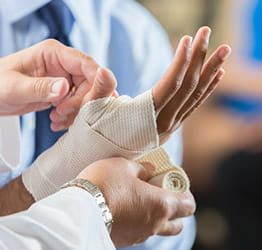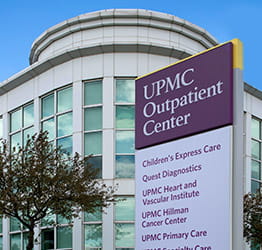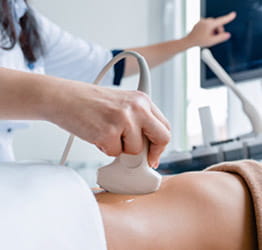Before 2025, Marsha Songer had never experienced pain as severe as the back pain that radiated down her entire left side.
The pain grew so debilitating that it forced her to stop working and left her struggling even to walk.
"I'm an active person," says Marsha, 63, of Clarion County, in northwest Pennsylvania. "I'm not used to being confined to my house, which is pretty much what I was. I just couldn't do anything."
Marsha was referred to Matt El-Kadi, MD, chief, Neurosurgery, UPMC Passavant. In April 2025, Dr. El-Kadi performed fusion surgery on Marsha's lumbar spine.
After surgery, Marsha is no longer experiencing pain and is returning to her normal activities.
"At my age, I didn't know if I was ever going to be able to go back to work again," she says. "I was so paranoid of not being able to walk. That was my biggest fear. (But) I have no pain."
Sudden, Severe Pain
Marsha woke up one morning in January 2025 with severe back pain that radiated down her left leg.
She didn't think much of the pain at first, going to her job as a cleaning professional for a local business. But as the day continued, the pain worsened, and she visited her local emergency department and had x-rays taken. She was told the pain was coming from irritation of her sciatic nerve and given medication to curb the pain.
While the medication helped somewhat, it didn't eliminate the pain. Marsha followed up with her primary care provider, Paul Hamm, DO, at UPMC Primary Care in Shippenville, Pa. Dr. Hamm prescribed steroids for the pain.
Over the next month, Marsha's pain worsened, although she continued to go to work. She felt pain down her whole left side.
“The pain was horrible, but I just kept on working," she says. "I was slow at working. I did what I was supposed to do, and I just kept pushing myself. But it was definitely very painful."
By mid-February, the pain became so severe that Marsha could no longer continue working. She was having trouble walking, and she experienced shaking on her left side. She struggled to run a vacuum cleaner. When she cooked, she used a walker for support because she was worried about falling.
"I literally could walk only 3 feet, if that," she says. "My legs were just so weak. I had to get a walker to help me walk.
"That pain going down my back was horrific. I couldn’t sleep. I was up every hour. Some nights, I was crying all night because it hurt so bad."
Seeking Further Treatment
Marsha saw Dr. Hamm again, and he referred her to Dr. El-Kadi for further evaluation. She visited Dr. El-Kadi for the first time in early March 2025.
Dr. El-Kadi ordered a magnetic resonance imaging (MRI) exam. The imaging showed multiple problems in the lumbar (lower back) area of Marsha's spine, including spinal stenosis, foraminal stenosis, and anterolisthesis. Foraminal stenosis is a type of spinal stenosis where the openings through which the nerves exit the spinal canal are narrowed. Anterolisthesis occurs when one of the vertebrae slips in front of the vertebra below it, putting pressure on the vertebrae below.
The issues were causing instability in Marsha's spine and leading to her symptoms.
"They treated me very nice," Marsha says of Dr. El-Kadi and his staff. "(Dr. El-Kadi) explained to me what was going on. His whole staff was very, very nice, extremely nice. Very caring.
"You'd ask questions, and he'd answer them. I was very, very satisfied with my first visit."
Dr. El-Kadi prescribed physical therapy to see if it would have an impact on Marsha's symptoms. However, after a month, the physical therapy had no effect.
"I couldn't do some of the stuff they were having me do," she says.
Marsha visited Dr. El-Kadi again in early April, and he offered her the next step in the treatment plan: surgery.
Undergoing Surgery
Marsha was scheduled for surgery on April 29, 2025, at UPMC Passavant–McCandless.
Dr. El-Kadi performed a lumbar fusion, using screws and pins to stabilize Marsha's spine.
She says when she woke up, she no longer felt any pain on her left side.
"I really didn't know for sure because you've got pain medication, but after that medication had worn off some, the pain in my leg was gone," she says. "I was absolutely amazed.
"It was absolutely wonderful. My legs were still weak, and I was a little bit concerned about that. But I thought, 'Well, you know what, I haven't used them for a little while.'"
Marsha spent three days in the hospital after her surgery. Before her discharge, the inpatient physical therapy team helped her get out of bed, walk, and learn to use the stairs.
She says the entire hospital staff was helpful during her stay.
"That hospital is wonderful," she says. "(Dr. El-Kadi's) staff that he had there were absolutely wonderful."
Feeling Stronger
One month after her surgery, Marsha says she felt almost back to normal. She began in-home physical therapy the week after her surgery, and she progressed to out-of-home physical therapy in late May.
Soon after her surgery, Marsha felt a major difference in her ability to move around.
"I was able to walk without the walker," she says. "I don't walk with a cane. I don't walk with anything now."
Marsha says she's feeling almost back to normal.
She can walk without pain and use the vacuum cleaner and cook with no issues. She watches one of her grandchildren every weekend and can keep up better. And she also sleeps through the night without pain.
Marsha was cleared to go back to work in July 2025.
"Just being able to walk out in my yard and enjoy it, it's definitely been a lot better than sitting in a chair all day," she says.
Marsha says she's grateful to Dr. El-Kadi and his whole staff for the care they provided. She says she's recommended him to people she knows who have back pain.
"It was absolutely wonderful — the best care," she says. "He and his staff. I greatly appreciate every one of them. I was so worried, and I can walk. I'm just so tickled that I don't have that pain going down my leg anymore. I would give him 100%."
Marsha’s treatment and results may not be representative of all similar cases.





